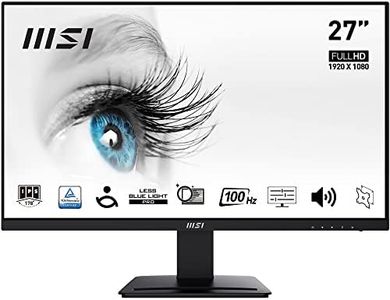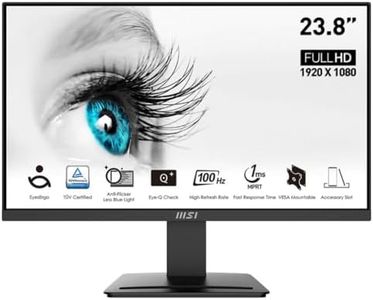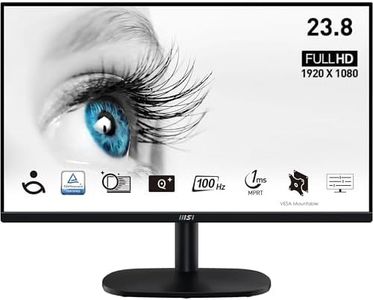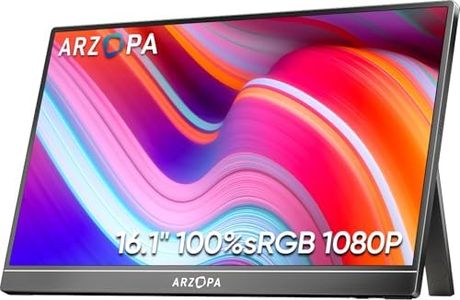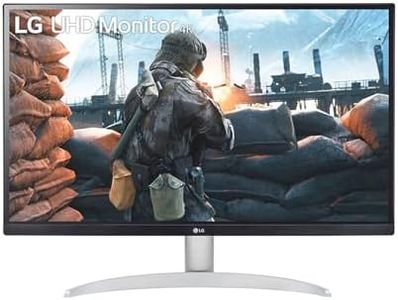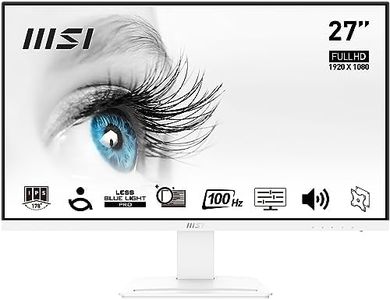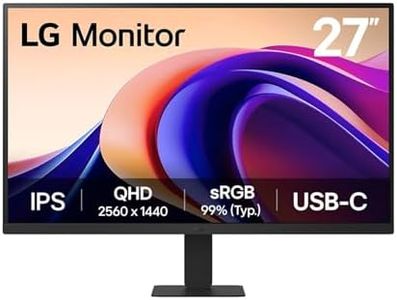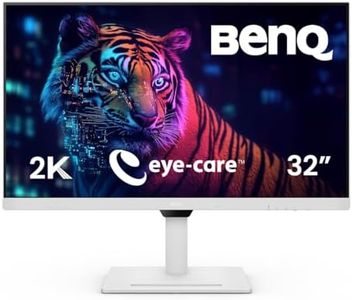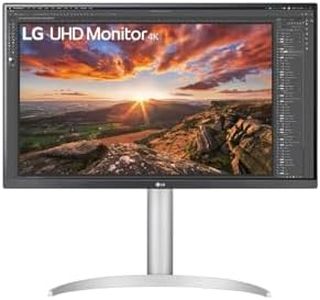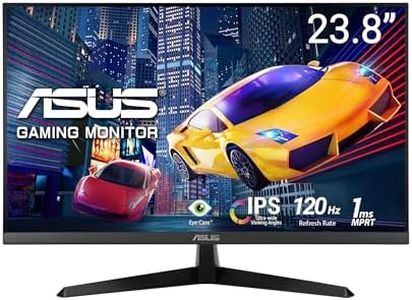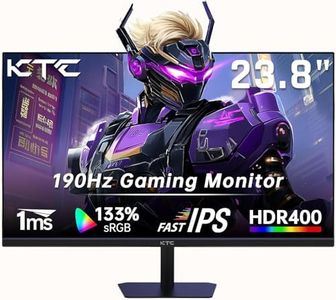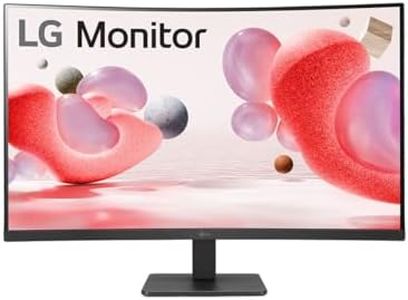We Use CookiesWe use cookies to enhance the security, performance,
functionality and for analytical and promotional activities. By continuing to browse this site you
are agreeing to our privacy policy
10 Best Eye Care Monitors
From leading brands and best sellers available on the web.By clicking on a link to a third party's website, log data is shared with that third party.
Buying Guide for the Best Eye Care Monitors
Eye-care monitors are specially designed to reduce eye strain and discomfort during long hours of computer use. Choosing the right eye-care monitor is important if you spend a lot of time in front of a screen, whether for work, study, or leisure. When selecting an eye-care monitor, it's important to look beyond just size and resolution. There are several key features and technologies aimed at protecting your eyes and improving comfort. Understanding these features will help you make a choice that fits your needs and habits.Blue Light FilterA blue light filter reduces the amount of potentially harmful blue light emitted by your monitor. Blue light can contribute to eye strain and may interfere with sleep if you're using your screen later in the day. Monitors typically offer blue light reduction settings that can be turned on or adjusted. Some monitors allow you to control the strength of the filter, while others have automatic or fixed settings. To choose the right one, consider when and how long you use your monitor; stronger filters can be helpful for extended use or late-night work, while more subtle filters might keep colors more accurate if you need to do design or visual tasks.
Flicker-Free TechnologyFlicker-free technology eliminates or significantly reduces screen flicker that comes from the backlighting of the display. Even if flicker is not visible to the naked eye, it can cause eye fatigue or headaches over time. Not all monitors advertise this feature, but many eye-care monitors now prioritize it. If you’re someone who suffers from headaches or fatigue after prolonged screen use, this is an especially important feature to look for. Choosing a monitor with flicker-free certification ensures the technology is reliable and will help keep your eyes more relaxed.
Anti-Glare CoatingAnti-glare coating is a special treatment on the monitor surface that cuts down reflections and glare from ambient lighting or sunlight. Glare can force you to strain your eyes to see clearly, especially in brightly lit rooms. Some monitors are designed with matte screens that diffuse reflections, while others might have glossy finishes that look vibrant but can be more reflective. If your workspace has lots of natural light or overhead lighting, an anti-glare screen will help minimize discomfort and allow you to work for longer sessions comfortably.
Adjustable Stand (Ergonomics)An adjustable stand lets you change the height, tilt, and sometimes the rotation or swivel of the monitor. This allows you to set the screen at the right level and angle, which minimizes neck and eye strain. Some monitors offer only tilt adjustment, while ergonomic models often allow height, swivel, and pivot adjustments as well. Think about your desk setup and posture: if you typically look up or down at your monitor, or share it with others, full adjustability can make a big difference in comfort.
Brightness and Contrast AdjustmentThe ability to easily adjust brightness and contrast helps you set the monitor to comfortable levels depending on your room’s lighting. Higher brightness can help in well-lit rooms but could be too harsh at night, while high contrast makes onscreen text and images clearer but may increase strain if set too high. Some monitors come with automatic brightness adjustment sensors. If you work in changing light conditions or use your monitor both day and night, easy access to these controls can make a significant impact on eye comfort.
Screen Size and ResolutionScreen size determines how large the display is, measured diagonally, while resolution is the number of pixels that make up the screen. Higher resolution provides sharper images and text, which means less squinting or zooming in. However, very large screens or extremely high resolutions may require you to adjust font and icon sizes for comfortable viewing. Think about your typical use: a moderate screen (between 24 to 27 inches) with Full HD or higher resolution is generally comfortable for most tasks, but make sure text and details are easy to see without increasing strain.
Eye-Care CertificationsCertifications from organizations like TÜV Rheinland indicate independent testing of eye-care features such as low blue light and flicker-free performance. These certifications give you extra assurance that the monitor meets certain standards for eye safety. If you are highly concerned about eye strain or use your monitor for extended periods, looking for these certifications can help you find a trustworthy product.
